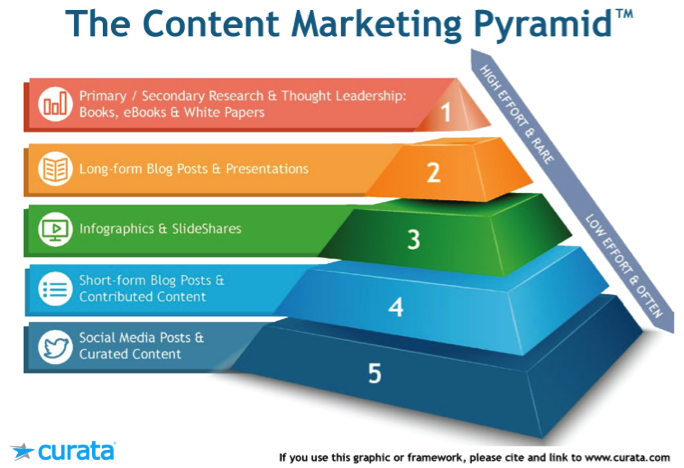
Get your FREE 30-day trial.
Please complete all fields.
Each year, content marketing continues to prove itself as an effective approach for businesses. In fact, 65% of B2B marketers rate their content marketing efforts as “very effective” and “somewhat effective” at delivering business value. [source]
But what about the other 35%? Clearly, not all marketers are seeing results with content. So the question is, how can you get more value from your content efforts?
The first step is to develop a content strategy and streamline the production process with an editorial calendar. This post will explain how to create this editorial calendar by providing 12 must-have fields.
Before you prepare your editorial calendar, it’s important to know what content marketing is.
Content marketing is the process for developing, executing and delivering the content and related assets that are needed to create, nurture and grow a company’s customer base.
Content marketing doesn’t just create buzz or awareness for a brand. It contributes to and impacts the entire buying process. It works at every stage of the sales funnel, affecting both new customers and repeat sales.
For content marketing to work, it’s important to have someone who is held accountable for its implementation. This is where the role of a content marketing manager or lead comes in. This person should create and maintain an editorial calendar to manage and leverage a team of writers. In fact, 49% of companies have an executive responsible for content marketing.
This calendar should be more than a simple spreadsheet with fields to fill in. Instead, it’s a planning tool that helps structure, implement and measure the effectiveness of your content strategy and marketing efforts.
Here are the steps key attributes you must label in an editorial calendar:
1. Pick A Relevant Headline
This may seem like a no-brainer, but choosing the right title is a key part of the success of your content asset, and it should take some time. How do you know you’ve selected the best title for your content?
2. Determine The Proposed Publish Date
Select a publish date before starting content development to hold yourself and your team accountable for completing it on time. After creating the content, you may be tempted to continue tweaking it for an extended period of time. A publish date will ensure that you don’t keep your content “behind bars,” which may only delay your opportunity to drive leads and revenue from your efforts sooner rather than later.
3. Specify The Type Of Content
It’s important to have a mix of different content types in your overall marketing strategy. Documenting this helps to manage the production process so you don’t publish too much of just one content type.
Content types can include infographics, curated lists, long-form content, short-form content, webinars, presentations or e-books.
4. Track Production Progress
Here, you specify the status of your content. For example, attributes could include: Not Started, Work In Process, Pitched, Submitted, Accepted, Scheduled or Published.
With this, you can ensure each piece of content makes its way through your content supply chain and identify any bottlenecks in the process.
5. Specify The Type of Media
Content can either be owned, earned or paid. Focus on owned media then expand to earned and paid media, using these channels as onramps to your owned properties.
6. Specify The Destination of Your Content
In line with media type, here you state where your content will be published. This could be your blog, company page, Linkedin or an industry blog accepting your guest posts.
7. Keep Track Of The Writer
Who is responsible for creating the content? Label the specific writer or a designer (e.g., if it’s an infographic or presentation)?
8. Specify The Author
This is the person who will ultimately get credit for the piece of content. In some cases, this is the same person as the writer. In other cases, it will be someone else (If you are using the services of a ghostwriter or freelance writer).
9. Specify The Owner
Who ensures the content is completed and published? An editor often fills this role. But in the case where there’s no editor, this could be the writer or the author.
10. Track The Position in The Content Pyramid

Identify a larger campaign or program that this content aligns with. At Curata, we use the Content Marketing Pyramid framework (shown above) to plan these programs. Attributing individual pieces of content to a pyramid will help you analyze the impact of all pieces of content within that pyramid and ensure optimal reuse and recycling of content.
11. Identify The Persona
Many marketing teams already have target buyer personas developed. When you are creating a piece of content, have one of these personas in mind. Examples include titles such as “Digital Marketing Manager” or “CIO.”
12. Pick a Buying Stage
Different buying stages require different types of content to address respective objections. Buying stages include: TOFU (Top of Funnel); MOFU (Middle of Funnel); BOFU (Bottom of Funnel).
Of course, these fields are not set in stone. These suggestions provide a foundation for your editorial calendar. You can specialize it by adding or subtracting fields to cater towards your organization.
About the Author
Learn how to measure your content marketing and determine success. Download the free Salesforce e-book.